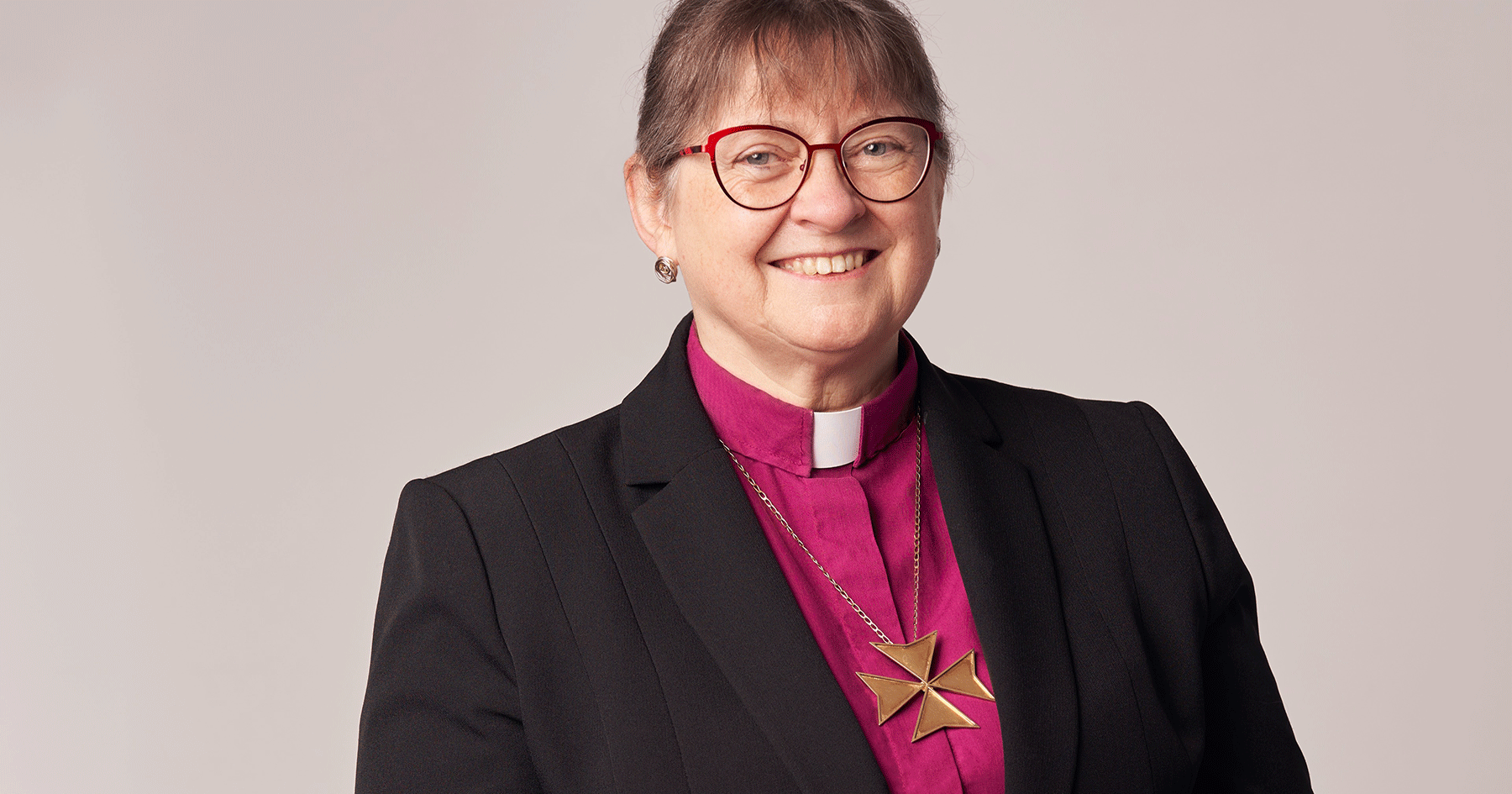Reflection by Archbishop Lynn McNaughton
Transfiguration — transition between Seasons — we mark the “Transfiguration” as we close the Season of Epiphany with the Sunday before we begin Lent. In Epiphany Season we focus on Jesus’ ministry and therefore on our ministry as Church. Lent is the season of preparation for Easter when we walk with Jesus on his journey to suffering and the Cross. Putting the transfiguration story here at this hinge moment in the liturgical year is meant to create a space for the work ahead of us. What does it mean for us to witness this event? How does it affect our own understanding of Jesus and what it means to follow him as disciples?
This story is full of Mystery. Any close encounter with the Holy is always hard to articulate. I think it important to observe the jarring juxtaposition of this mystical story (dazzling robes, God’s voice in the cloud, appearance of ancestors in the faith) connected with their immediate return to everyday life and the woes of humanity.
Significantly, this story happens immediately after Jesus is trying to teach disciples that he must undergo great suffering and be killed, and that he will be raised from the dead. He tells them they must take up their own cross. They resist!
In this shining moment of Transfiguration, Moses and Elijah are with Jesus. They appeared in “glory,” Glory! Sarah Heinrich (professor of New Testament at Luther Seminary) says “Glory” is the “visible aspect of God’s holiness and majesty,” which is both “puzzling and yet hope-giving.”
Moses and Elijah are key figures from Hebrew scripture with mystical credentials — both are described as having walked with God, spoken to God intimately. Moses, the one who brought the covenant teachings of God to the people; Moses who lead the people out of slavery into the promised land through all the trials of desert wandering; Moses for whom God made water flow from a rock for the people dying of thirst.
Elijah the truth-teller who fearlessly confronted corrupt monarchs; Elijah who challenged people for worshipping false gods; Elijah whom
God fed on the wilderness mountain through a raven bringing bread and water.
Moses and Elijah show up here to say to Jesus: we too walked perilous roads because of our faith, and God sustained us. You can do this. God will sustain you on this road. This encounter will give Jesus the strength and courage he will need for the road to Jerusalem.
For us to live as witnesses to the Transfiguration is to allow this story to give us strength and courage for the road we are travelling. We live with a sense of having “ancestors of the faith” present with us, Moses and Elijah, “a cloud of witnesses,” the “communion of saints.” We are not alone in this life. We live with a profound sense of being surrounded by community. This helps sustain our hope.
The presence of Moses and Elijah was a confirmation for the witnessing disciples that what God is up to in Jesus is in continuity with what God is always up to, delivering people from oppression and death-dealing rulers.
Now the voice from the cloud is addressed to the disciples, “This is my chosen, listen to him,” hear Jesus’ hard teaching that he must go to Jerusalem to the cross.
The disciples (and therefore we) are drawn in to be eyewitnesses; seeing Jesus in his glory, and hearing God’s confirmation of Jesus.
And then the vision fades, the visible glory fades, and the disciples keep silent. It is an entirely appropriate response after that kind of encounter with God; a time to process it, to ponder in their hearts in silent contemplation so that this experience shapes and sustains them and gives their ministry meaning and courage.
Jesus and his disciples are directed back to their mission. The very next day Jesus and the disciples are surrounded by a crowd, and a child with convulsions. The father had begged the disciples to cast out the demon but they couldn’t. Jesus rebukes the unclean spirit, heals the boy, and restores the boy to his family.
It seems to me this last piece is so evocative of our human situation in the here and now. The disciples caught glimpses of the glory of God and of Jesus, yet still feel helpless in the face of evil. We need God to bring healing, to rebuke the unclean spirits, to restore community.
The World is convulsing, being dashed to the ground by demons: the evils of war, ruthless tyrants terrorizing and destroying the lives of innocent people, and other nations paralyzed about how to help for fear of further escalation.
I feel like the disciples at the foot of the cross, watching in horror at the crucifixion yet under the terror of Roman oppression under a tyrant, feeling helpless to address the evil.
We understand and empathize with the disciples who are ineffective in casting out demons. We long for Jesus to come and exorcise all of our demons.
These two stories are deeply connected. The transfiguration means that Jesus has power to rebuke unclean spirits. The Glory of God’s presence we have seen is still here in the pain of this world. God is not remote, but with us suffering and at work transforming us and giving us strength: mobilizing us to work together, to receive refugees, to feed the hungry, to support those suffering.
The Transfiguration story gives us a quest to tend in our spiritual lives during this upcoming season of Lent. We enter an Exodus wilderness in preparation for receiving God’s new life.
We walk with Jesus to the Cross. In Lent we honestly face our demons and the costliness of opposing evil.
How do we pay attention to the glimpses of God’s glory in a way that allows us to see those signs of God’s presence and then to remember them so they are a source of strength for us in this wilderness time.
After the Transfiguration, Jesus set his face like flint to go towards Jerusalem. May we likewise gather our courage to continue in the face of evil.
+Lynne


